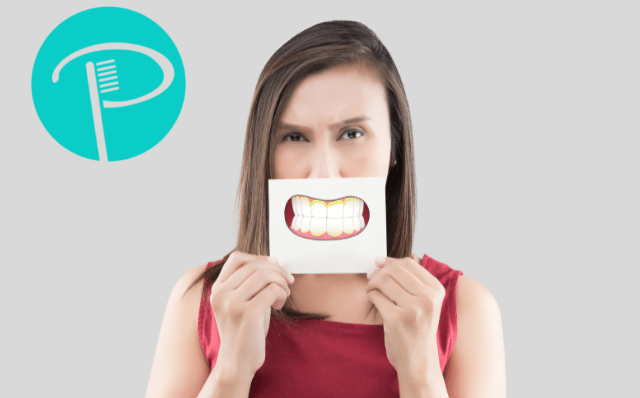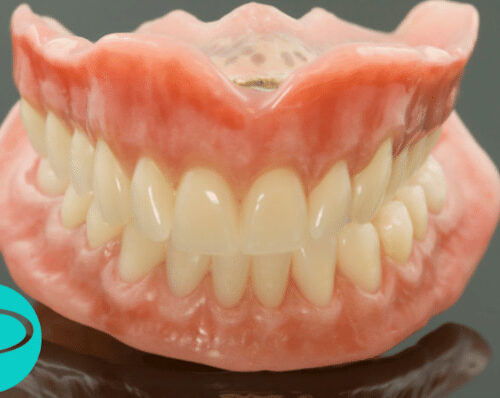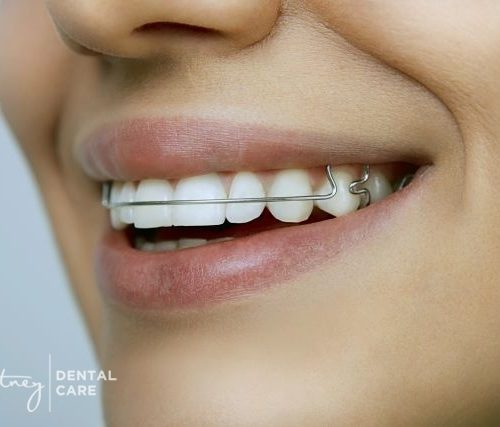Tartar vs Plaque: What’s the Difference?

Plaque is the thin film that accumulates on your teeth every day after eating and drinking. If plaque is not removed, it can harden and turn into tartar, which must be removed by a dental professional.
What is Dental Plaque?
Dental plaque builds up on our teeth each day as a result of bacteria mixing with saliva and food. Everyone deals with plaque and it can be easily removed by having a regular oral hygiene routine.
Plaque contains a lot of different bacteria, some of which is harmful for your mouth.
What Causes Plaque on Teeth?
The bacteria in your mouth produces acids when it mixes with food and drink. These acids attack the outer layer of your teeth (the enamel) and begin to break it down. Dental plaque builds up faster when you consume sugary foods or drinks.
What Does Plaque Look Like?
Plaque is a soft, sticky film that is usually colourless and is described as having a fuzzy feeling when you move your tongue over it. It can also be a pale yellow colour.
What is Dental Tartar?
Also known as dental calculus, dental tartar is what forms when dental plaque builds up and hardens. Only a dental professional can remove tartar once it has formed.
What Causes Tartar on Teeth?
If regular brushing and flossing routines are not followed each day, the plaque on your teeth will combine with minerals in your saliva and turn into tartar. Some people are more susceptible to tartar buildup than others, including those who have braces, dry mouth, crowded teeth or those who smoke.
What Does Tartar Look Like?
Tartar has a rough, hard texture and is often yellow or brown in colour. Tartar settles around the outside of your teeth and it can also accumulate below your gum line.
The Difference Between Plaque and Tartar
Formation and Buildup
One of the key differences between plaque and tartar is the way each substance accumulates on teeth. Plaque builds up naturally throughout the day as a result of eating and drinking, especially if you eat a lot of sugary foods and carbohydrates. Dental plaque is easy to remove and won’t cause a problem if you brush and floss regularly.
Differently, tartar accumulates on teeth when plaque is not removed and is left to harden. This can make it more difficult to brush your teeth.
Appearance and Feel
Plaque is a slimy film that appears on and around the teeth each day. It’s a thin, soft substance that is usually transparent, white or pale yellow.
Comparatively, tartar is hard and crusty and can make the teeth appear discoloured. Tartar can stain the teeth if it’s not removed quickly.
Removal Methods
Dental plaque can be removed by brushing and flossing at least twice a day, as well as after eating sugary foods.
Unlike plaque, tartar is recommended to be removed by a dental professional. This is because tartar bonds very strongly to tooth enamel. While there are some methods to remove tartar at home, having a dental professional clean your teeth ensures the best outcome with no risk of oral complications.
What is Worse Tartar or Plaque?
Tartar is worse because it is more difficult to remove and can lead to more problems if left untreated, such as gum disease, gingivitis and tooth infection.
However, tartar is only caused by untreated, hardened plaque. Similarly, plaque can damage tooth enamel and cause cavities if it’s not regularly removed.
How to Prevent Dental Plaque and Tartar Buildup
To prevent tartar buildup, you must remove plaque from your teeth by brushing and flossing regularly. The following oral health tips can help you remove plaque and prevent buildup:
- Brush your teeth at least twice a day. You should brush your teeth for at least 2 minutes each time and you should consider using fluoride toothpaste. Fluoride helps to rebuild the enamel on your teeth after plaque has worn it down.
- Use an electric toothbrush – an electric toothbrush may be more effective at removing plaque than a manual toothbrush because of the speed at which it moves.
- Floss at least once a day – this will help to clean any areas that your toothbrush may have missed.
- Try to limit the amount of sugary foods that you eat – sugars and carbohydrates increase the rate of plaque buildup, so if you do consume these, you should brush and floss your teeth afterwards. Eating a healthy diet full of calcium, protein, fruits and vegetables will help to prevent plaque buildup.
- Get regular dental checkups – you should aim to get one every 6 months so that the dentist can check for cavities and give you a professional cleaning.
- Quit smoking – smoking puts you at a higher risk of developing plaque and tartar buildup as well as periodontal disease and oral cancer.
What happens if plaque isn’t removed?
Not cleaning your teeth properly can also lead to other dental health issues like tooth decay and cavities. Cavities are areas of your teeth that have been damaged so badly that they create holes. These holes then need to be treated and sealed by a dentist.
If plaque is not removed and it turns into tartar, this can result in receding gums. Gum recession occurs when gum tissue starts to pull away from the teeth and expose the tooth’s root. If left untreated, this can lead to severe damage and tooth loss.
Tartar buildup can also result in periodontal disease. Signs and symptoms of periodontal disease include:
- Red or swollen gums
- Bleeding gums
- Bad breath
- Sensitive teeth
It’s important to control plaque buildup before it turns into tartar, in order to avoid dental health problems such as tooth decay, periodontal disease and gum recession.
Remove Tartar at Home Cavity vs Stain – Understanding the DifferencesLatest from the Dental Blog
 20 Nov 2017
20 Nov 2017
Women’s Dental Health
Good dental hygiene is important for everyone’s oral health. It’s especially important for women, as natural hormonal changes throughout a…
 28 Feb 2023
28 Feb 2023
A Guide to Your White Gums
Everyone aspires for a bright white smile, but white gums? Not so common. Healthy gums are usually pink, but if…
 30 Nov 2018
30 Nov 2018
How To Take Care of Your Braces
It doesn’t matter whether you are a child or an adult, sometimes having braces is just a part of life…
